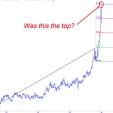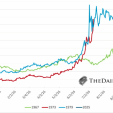US greenback closes lower
Bern-Switzerland (June 1) The dollar slid lower against the Swiss franc on Friday as disappointing U.S. economic reports on personal spending and consumer sentiment weighed.
USD/CHF touched lows of 0.8934, before easing back to 0.8952 at the close of trade, down 0.30%.
The pair was likely to find support at 0.8800 and resistance at 0.8989, last Wednesday’s high and a more than three-month high.
The dollar eased after data showed that U.S. consumer spending fell 0.1% in April from a month earlier, missing forecasts for a 0.2% increase. Personal income rose 0.3%, in line with forecasts.
Separately, the final reading of the University of Michigan's consumer-sentiment index for May came in at 81.9, up slightly from a preliminary reading of 81.8, but falling short of forecasts for 82.5.
The dollar had strengthened broadly against the other major currencies earlier in the week as the euro tumbled to more than three-month lows amid mounting expectations for monetary easing by the European Central Bank.
Data on Friday showing that the annual rate of inflation in Italy and Spain slowed in May underlined expectations that the ECB will take steps to tackle low consumer price growth, which its threatening the fragile recovery in the euro zone.
The US Dollar Index, which tracks the dollar against six other major currencies, traded softer on Friday and was last down 0.11% at 80.44. Earlier in the week, the index rose to highs of 80.63, the most since early April.
In the week ahead, investors will be looking to Friday’s U.S. nonfarm payrolls report for May for further indications on the strength of the labor market, while Tuesday’s euro zone inflation report will also be in focus, ahead of the ECB policy meeting and press conference on Thursday.
Ahead of the coming week, Investing.com has compiled a list of these and other significant events likely to affect the markets.












